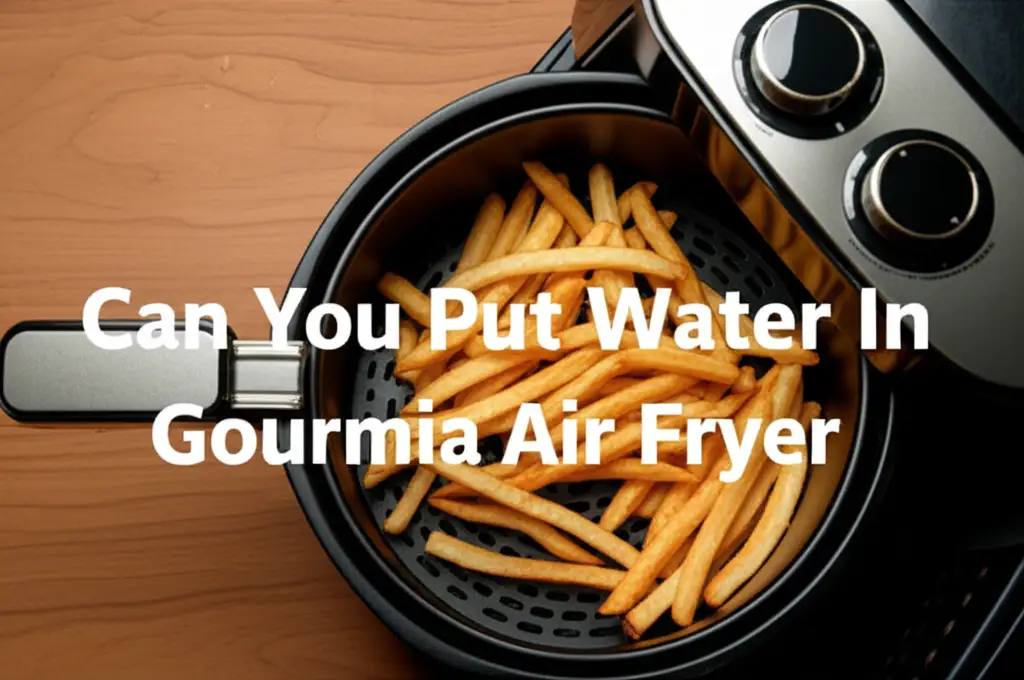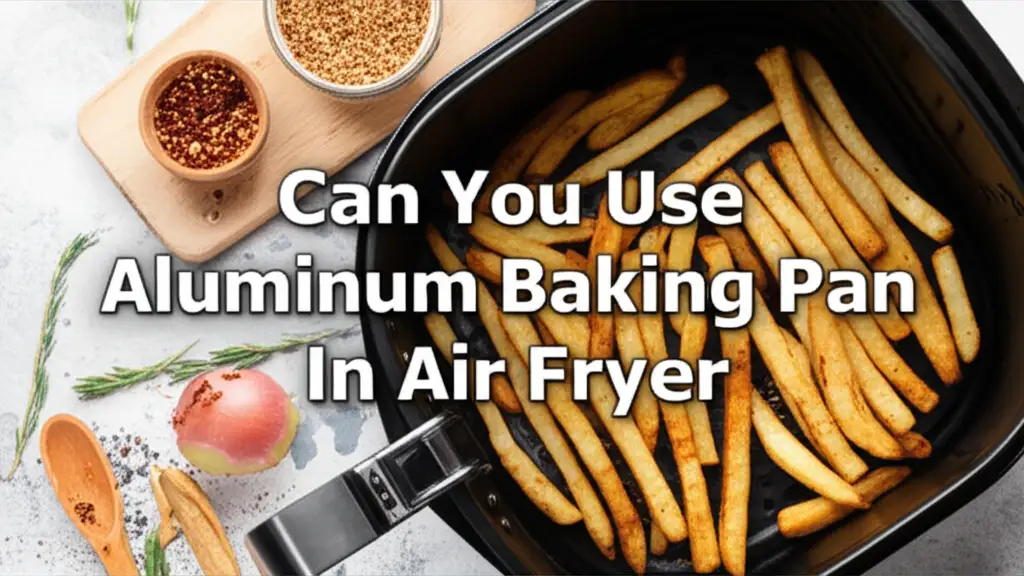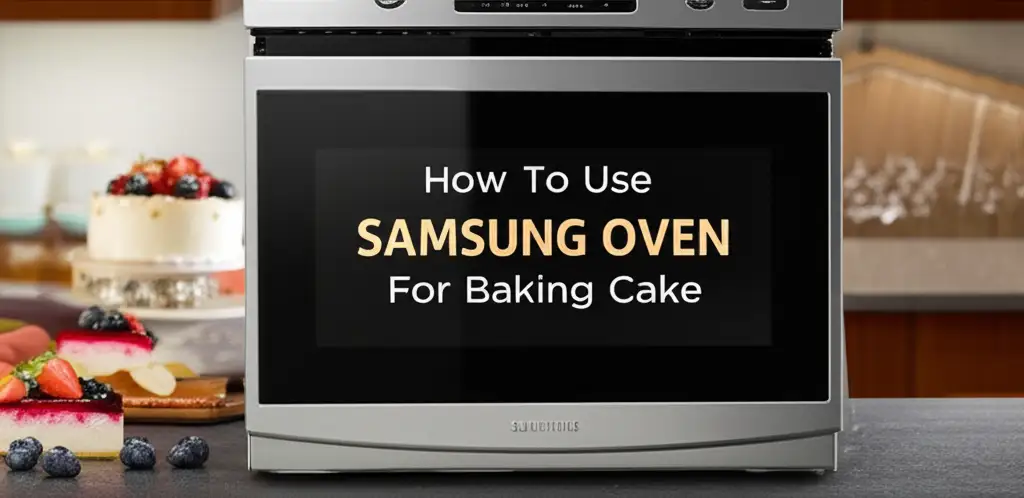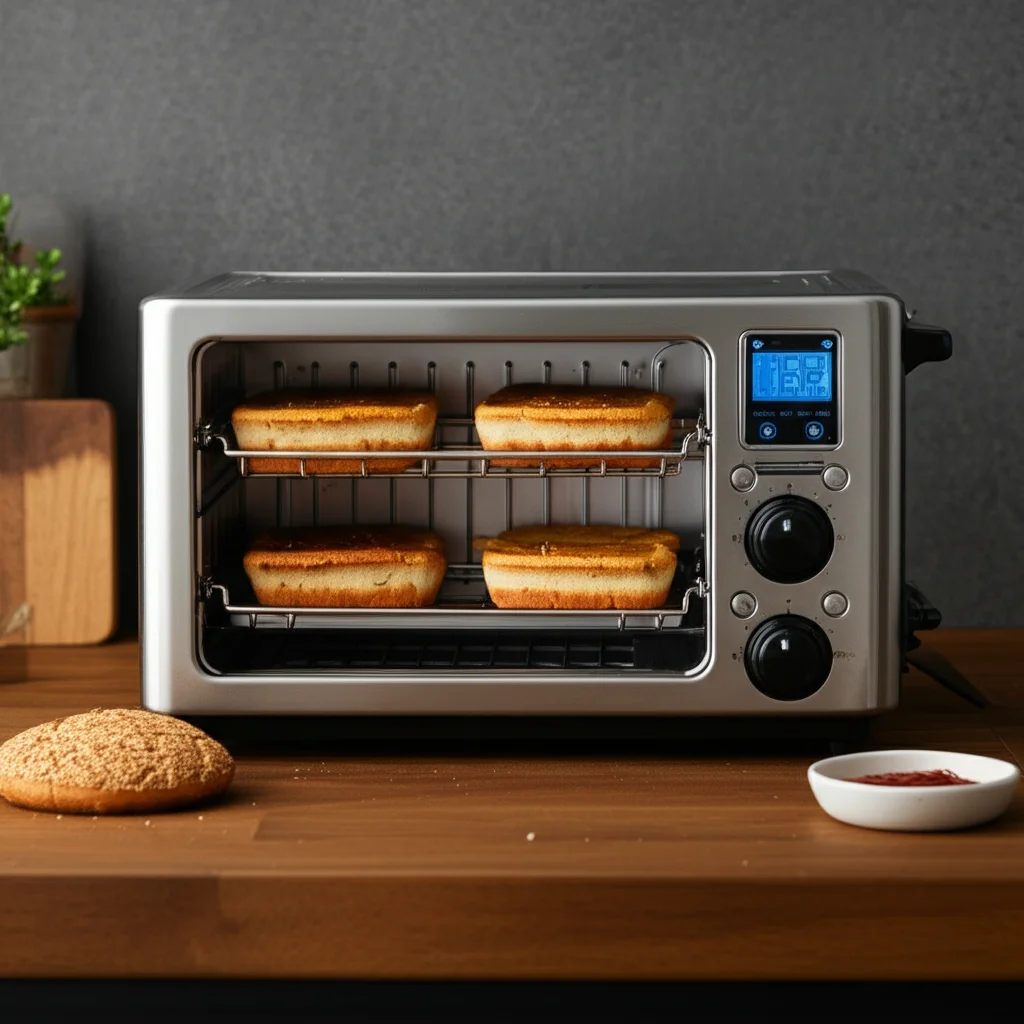· Davia Murnell · Kitchen Appliances · 18 min read
Can You Put Glass In Cuisinart Air Fryer
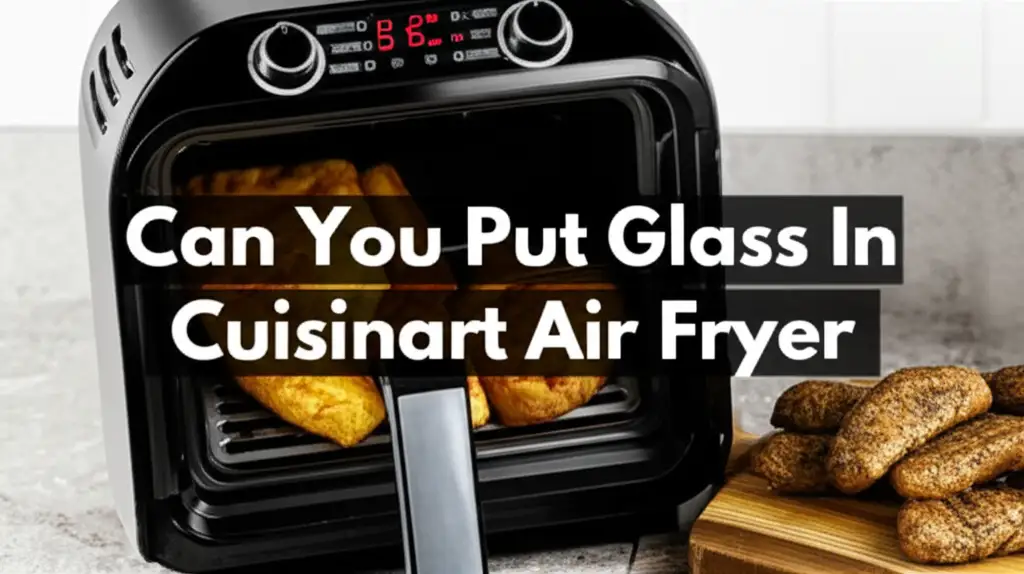
Can You Put Glass Bakeware Safely in Your Cuisinart Air Fryer?
Many people ask, “Can you put glass in Cuisinart air fryer?” This is a common question when exploring air fryer cooking. Air fryers use hot, circulating air to cook food quickly. Understanding how different materials react to these high temperatures is important. We want to ensure your cooking experience is both effective and safe.
This article explores the use of glass bakeware in Cuisinart air fryers. We will discuss which types of glass are suitable and which are not. You will learn about safe practices and essential precautions. We also examine the benefits and drawbacks of using glass. Finally, we will look at other bakeware options. This guide aims to provide clear, actionable information for all Cuisinart air fryer users.
Takeaway
- Only use tempered or oven-safe glass bakeware in your Cuisinart air fryer.
- Avoid non-tempered glass, cold glass in a hot air fryer, or glass with chips.
- Preheat glass bakeware with the air fryer for safer cooking.
- Glass offers even cooking and easy cleaning but requires careful handling.
- Always check manufacturer guidelines for both your air fryer and bakeware.
Clear, Concise Answer to the Main Query
You can put glass in a Cuisinart air fryer, but only if it is explicitly labeled as oven-safe, heat-resistant, or tempered glass. Regular glass or non-heat-resistant glass can shatter due to thermal shock from the rapid temperature changes and high heat inside the air fryer, posing a safety risk.
Understanding Glass and Your Cuisinart Air Fryer
The question of using glass in air fryers often comes up. Air fryers, including Cuisinart models, operate by circulating very hot air. This creates a cooking environment similar to a convection oven. Not all types of glass are designed to withstand such rapid and intense heat. Understanding the properties of different glass types is essential for safe use.
Glass can react in various ways when exposed to high temperatures. Regular drinking glasses or decorative glass items are not made for oven use. They can crack or shatter when heated quickly or unevenly. This is known as thermal shock. Tempered glass, however, is a different story.
Tempered glass undergoes a special heating and cooling process. This process makes it much stronger and more resistant to thermal shock than ordinary glass. It is designed to withstand significant temperature changes. This is why tempered glass is often used for bakeware and oven doors. Always look for specific labels on your glass items. These labels indicate if they are oven-safe or heat-resistant. Your Cuisinart air fryer reaches temperatures that require such durable materials.
When considering what to use, think about how air fryers work. The hot air surrounds the food quickly. This means any bakeware must handle fast temperature increases. A standard Cuisinart air fryer can reach up to 450°F (232°C). This is a high heat environment. Using the wrong type of glass can lead to dangerous situations. Always prioritize safety in your kitchen.
Identifying Safe Glass for High Temperatures
Choosing the right glass bakeware for your Cuisinart air fryer is critical. Not all glass is created equal when it comes to heat. You must use specific types that can handle the intense temperatures of an air fryer. Using incorrect glass can result in breakage and injury. Look for clear labeling on your bakeware.
Types of Glass Safe for Air Fryers:
- Oven-Safe Glass: This glass is made to withstand high temperatures found in ovens. It is a good choice for air fryers. Brands like Pyrex and Anchor Hocking produce many oven-safe glass dishes. These products are specifically designed for baking and roasting.
- Tempered Glass: This glass undergoes a special heat treatment process. This makes it much stronger and more resistant to thermal shock. Many oven-safe glass products are also tempered. It can handle sudden temperature changes better than ordinary glass.
- Heat-Resistant Glass: This term is often used interchangeably with oven-safe or tempered glass. It indicates the material is suitable for cooking at high temperatures. Always check the specific temperature rating if provided.
Types of Glass to Avoid:
- Regular Drinking Glasses: These are not designed for high heat. They will likely shatter.
- Non-Tempered Glass Dishes: If a glass dish does not explicitly say “oven-safe” or “tempered,” assume it is not safe.
- Glass with Chips or Cracks: Even oven-safe glass can break if it has existing damage. The defect weakens the structure, making it vulnerable to heat stress.
- Glass Lids Not Rated for Oven Use: Some glass lids are only meant for stovetop use or refrigeration. Do not use them in an air fryer unless they specify oven-safe.
Always verify the manufacturer’s recommendations for your specific glass dish. Most reputable bakeware brands provide clear instructions. If you are unsure, it is always safer to choose an alternative material. For more guidance on suitable materials, you might find information on general air fryer bakeware helpful. Remember, safety always comes first when cooking with hot appliances.
Best Practices for Using Glass in Cuisinart Air Fryers
Using glass bakeware in your Cuisinart air fryer requires careful attention to detail. Following best practices ensures both safety and optimal cooking results. Proper handling and temperature management are key. I find that these steps help me get the most out of my air fryer.
Preheating Glass Bakeware:
One critical rule is to preheat your glass bakeware along with the air fryer. Never place a cold glass dish into a hot air fryer. The sudden temperature change can cause thermal shock, leading to the glass cracking or shattering.
- Place your empty oven-safe glass dish inside the Cuisinart air fryer.
- Set the air fryer to the desired cooking temperature.
- Allow both the air fryer and the glass dish to preheat together. This gradual heating prevents stress on the glass.
Temperature Guidelines:
Most oven-safe glass bakeware is rated for temperatures up to 450°F (232°C) or higher. Cuisinart air fryers typically operate within this range. Always check the maximum temperature rating on your specific glass dish. Do not exceed this limit. While air fryers are generally safe, understanding how far they should be from cabinets can also contribute to overall kitchen safety, especially when operating at high temperatures. Learn more about air fryer placement for safety.
Avoiding Sudden Temperature Changes After Cooking:
Just as you should not put cold glass into a hot air fryer, avoid placing a hot glass dish onto a cold, wet surface. This can also cause thermal shock.
- Use oven mitts to carefully remove the hot glass dish.
- Place it on a dry, heat-resistant trivet or cooling rack.
- Allow the dish to cool gradually before washing or placing it in the refrigerator.
Ensuring Proper Airflow:
Air fryers rely on excellent air circulation for even cooking.
- Do not overfill your glass dish. Leave space for air to move around the food.
- Do not block the air vents of your Cuisinart air fryer. This ensures proper operation and prevents overheating.
By following these simple guidelines, you can safely use your oven-safe glass bakeware. This allows you to expand your air frying possibilities. I often use glass for smaller roasts or casseroles, and these steps ensure everything goes smoothly.
Benefits of Cooking with Glass in Your Air Fryer
Using glass bakeware in your Cuisinart air fryer offers several distinct advantages. From even cooking to easy monitoring, glass can enhance your air frying experience. I appreciate these benefits when I am cooking.
Even Heat Distribution:
Glass is an excellent conductor of heat. Once it reaches temperature, it holds and distributes heat very evenly. This helps cook your food uniformly. For dishes that benefit from consistent heat, such as small casseroles or roasted vegetables, glass bakeware performs well. It reduces the likelihood of hot spots that can burn parts of your meal. This ensures your food cooks thoroughly from all sides.
Visual Monitoring of Food:
One of the most practical benefits of clear glass bakeware is visibility. You can see how your food is cooking without opening the air fryer basket or door. This allows you to monitor browning and doneness. It helps prevent overcooking or undercooking. This visual aid is especially useful when trying new recipes or cooking delicate items. For example, when I am cooking chicken wings, I like to see their progress without interrupting the cooking cycle. You can learn more about air frying chicken wings for perfect results.
Non-Reactive Material:
Glass is a non-reactive material. This means it does not interact with acidic foods, unlike some metals. You can cook tomato-based sauces or citrus-marinated dishes without worrying about metallic tastes. This quality preserves the true flavor of your ingredients. It also ensures no unwanted chemicals leach into your food.
Easy Cleaning:
Glass bakeware is typically very easy to clean. Its smooth, non-porous surface prevents food from sticking aggressively. Most glass dishes are dishwasher safe, which saves time and effort. Food residue often wipes away easily with soap and water. This makes cleanup quick and simple after your meal. Maintaining clean bakeware also contributes to the overall hygiene and longevity of your air fryer. Regular cleaning of your air fryer, including its accessories, is essential. Discover how to effectively clean your air fryer to keep it in top condition.
These advantages make oven-safe glass a valuable tool in your air frying arsenal. They combine safety with practicality, leading to better cooking outcomes.
Potential Risks of Using Glass and How to Prevent Them
While oven-safe glass can be used in your Cuisinart air fryer, potential risks exist. Understanding these risks is vital for safe operation. I always keep these points in mind when I choose my bakeware. Most issues stem from not understanding the material or its limits.
Thermal Shock:
The primary risk associated with glass is thermal shock. This happens when glass experiences a sudden, drastic change in temperature.
- Cold Glass into Hot Air Fryer: Placing a cold glass dish (e.g., straight from the refrigerator or freezer) into a preheated Cuisinart air fryer can cause it to shatter. The rapid expansion of the glass from intense heat creates immense stress.
- Hot Glass onto Cold/Wet Surface: Similarly, taking a very hot glass dish out of the air fryer and placing it on a cold countertop or wet surface can also cause it to break. The rapid contraction of the glass creates the same kind of stress.
Prevention: Always ensure glass bakeware is at room temperature before placing it into a preheated air fryer. Preheat the glass dish along with the air fryer. When removing hot glass, always place it on a dry, heat-resistant surface or a cooling rack.
Overheating and Exceeding Temperature Limits:
Even oven-safe glass has a maximum temperature limit. Exceeding this limit can weaken the glass over time or cause it to break. While Cuisinart air fryers operate at high temperatures, they typically stay within safe limits for most oven-safe glass. However, some recipes might call for extremely high temperatures or prolonged cooking at the maximum setting.
Prevention: Always check the specific temperature rating for your glass bakeware. Do not use glass dishes if they are not explicitly labeled as oven-safe or heat-resistant. Monitor cooking times and temperatures, especially for long cooking cycles.
Cracks, Chips, and Weaknesses:
Any existing damage to a glass dish compromises its structural integrity. A small chip or hairline crack can expand rapidly when exposed to high heat or thermal stress. This can lead to the dish shattering in the air fryer.
Prevention: Before each use, inspect your glass bakeware for any signs of damage. Discard any glass dishes that have chips, cracks, or significant scratches. It is not worth the risk of injury or food contamination. Using compromised bakeware can be as risky as using the wrong cleaning products. For instance, you should never use harsh chemicals like oven cleaner in your Cuisinart air fryer due to potential damage and toxic fumes.
Understanding and addressing these risks ensures a safe and productive cooking experience with glass in your Cuisinart air fryer. Safety measures are always worth the effort.
Exploring Alternative Bakeware Options for Your Air Fryer
While glass offers benefits, other materials are excellent choices for bakeware in your Cuisinart air fryer. Each material has unique properties that can suit different cooking needs. I often switch between these options based on what I am cooking.
Metal Bakeware:
Metal is a very common and effective material for air frying.
- Aluminum: Lightweight and heats up quickly. Great for achieving crispiness. Disposable aluminum foil pans are convenient for easy cleanup.
- Stainless Steel: Durable and non-reactive. Excellent for various dishes.
- Carbon Steel: Offers great heat retention and is ideal for browning.
- Pros: Excellent heat conduction, durable, often inexpensive. Many metal pans are explicitly designed for air fryers.
- Cons: Can be reactive with acidic foods (aluminum), may scratch non-stick coatings if not careful.
- Best for: Achieving crispy textures, baking, roasting meats like steak in your Cuisinart air fryer.
Silicone Bakeware:
Silicone bakeware is flexible, non-stick, and heat-resistant.
- Pros: Non-stick surface, easy to clean, flexible for easy food removal, wide temperature range. It is generally safe for temperatures up to 450°F (232°C).
- Cons: Can be floppy when hot, may not provide the same crispness as metal.
- Best for: Muffins, cakes, individual servings, delicate items, or recipes where a non-stick surface is important.
Ceramic Bakeware:
Ceramic dishes are beautiful and retain heat well.
- Pros: Even heat distribution, non-reactive, attractive for serving.
- Cons: Can be heavy, may be prone to cracking if subjected to thermal shock (similar to glass, ensure it’s oven-safe).
- Best for: Casseroles, gratins, slow-cooked dishes that benefit from steady heat.
Parchment Paper and Foil Liners:
Parchment paper and aluminum foil are not bakeware in themselves, but they are useful liners.
- Parchment paper: Good for preventing sticking and making cleanup easier. Ensure it’s rated for the air fryer’s temperature and does not block airflow. I find it very convenient for everyday use. You can read more about using parchment paper in Cuisinart air fryers.
- Aluminum foil: Can be molded to create custom liners or small cooking vessels. Be careful not to block airflow and avoid using it with highly acidic foods for long periods.
- Pros: Extremely easy cleanup, prevents sticking.
- Cons: Must be used correctly to avoid airflow issues or fire hazards.
- Best for: Lining baskets, wrapping food, quick cleanup.
When choosing, consider the type of food, desired texture, and ease of cleaning. All these materials are viable alternatives to glass, each with its own advantages.
Cleaning Glass Bakeware and Your Air Fryer
Proper cleaning of your glass bakeware and Cuisinart air fryer ensures longevity and hygiene. A clean air fryer performs better and cooks food safely. I always make sure to clean my kitchen tools promptly after use.
Cleaning Glass Bakeware:
Glass bakeware is usually very simple to clean.
- Cool Down First: Always allow the glass dish to cool completely before washing. Placing hot glass into cold water can cause thermal shock and breakage.
- Soak if Needed: For stubborn, stuck-on food, fill the dish with warm, soapy water and let it soak for 15-30 minutes. This softens the food residue.
- Wash Gently: Use a soft sponge or cloth and dish soap. Avoid abrasive scrubbers that can scratch the glass surface.
- Dishwasher Safe: Most oven-safe glass bakeware is dishwasher safe. Check the manufacturer’s instructions.
- Spot Cleaning: For water spots or streaks, a solution of vinegar and water can work wonders. This can even be applied to other glass surfaces. Learn more about cleaning glass without glass cleaner.
Cleaning Your Cuisinart Air Fryer:
Regular cleaning of your Cuisinart air fryer is crucial. Different parts require different approaches.
- Unplug First: Always unplug your air fryer before cleaning. This is a basic safety rule.
- Cool Completely: Allow the air fryer to cool down fully. Never clean a hot appliance.
- Removable Parts:
- Basket/Tray: Most Cuisinart air fryer baskets or trays are non-stick. Wash them with warm, soapy water and a non-abrasive sponge. Avoid metal scrubbers. Many removable parts are dishwasher safe. Check your specific Cuisinart model’s manual. For example, knowing if your Cuisinart pan can go in the dishwasher is helpful.
- Racks: If your Cuisinart is an oven-style air fryer, remove the racks. Wash them in warm, soapy water or place them in the dishwasher.
- Interior and Exterior:
- Wipe the interior with a damp cloth and a small amount of mild dish soap. Remove any food crumbs or grease splatter.
- Clean the exterior with a damp cloth. Avoid harsh chemicals or abrasive cleaners.
- For tougher grease inside, a paste of baking soda and water can be effective. Apply, let sit, then wipe clean.
- Heating Element: Gently wipe the heating element with a damp cloth after it has completely cooled. Be careful not to use too much water.
- Deep Cleaning: Periodically, a deep clean is beneficial to remove built-up grease. This involves more thorough scrubbing and attention to hidden areas. Check out guides on how to deep clean your air fryer for detailed steps. Keeping your air fryer clean ensures efficient operation and prevents unwanted odors.
Consistent cleaning habits extend the life of your appliance. They also ensure every meal you prepare is cooked in a clean environment.
Advanced Tips for Using Glass Bakeware with Your Cuisinart Air Fryer
To truly master using glass bakeware in your Cuisinart air fryer, a few advanced tips can make a big difference. These insights go beyond basic safety. They help optimize your cooking results. I have found these methods useful in my own cooking.
Adjusting Cooking Times and Temperatures:
Glass heats differently than metal. It often retains heat more effectively. This means you might need to adjust your cooking times or temperatures slightly.
- Lower Temperature: Sometimes, reducing the temperature by 25°F (approx. 15°C) can prevent overbrowning, especially on the bottom of the dish.
- Longer Cooking Time: Glass can sometimes take a little longer to initially heat up than metal. Be prepared for slightly longer cooking times, especially for larger items.
- Monitor Closely: Always use a food thermometer to check internal temperatures. This ensures food is cooked thoroughly.
Maximizing Airflow Around Glass:
Airflow is critical for air frying. Glass can be heavier and bulkier than some metal options.
- Elevate if Possible: If your Cuisinart air fryer model allows, consider using a rack or trivet under the glass dish. This elevates it slightly, promoting better airflow around the bottom and sides.
- Avoid Overcrowding: Do not pack your glass dish too full. Leave ample space for hot air to circulate. Overcrowding blocks airflow and leads to uneven cooking. This is a common mistake that can affect many recipes, like making beef jerky in your Cuisinart air fryer, where even drying is crucial.
Using Glass for Specific Recipes:
Certain recipes truly shine when cooked in glass bakeware within an air fryer.
- Small Casseroles: Glass is perfect for single-serving or small family-sized casseroles. The even heat helps ingredients meld beautifully.
- Roasted Vegetables: Root vegetables or thicker-cut vegetables roast wonderfully in glass. The transparency lets you see the caramelization process.
- Baked Desserts: Small cakes, brownies, or fruit crisps benefit from the gentle, even heat of glass.
- Reheating: Glass bakeware is excellent for reheating leftovers. It helps food heat through evenly without drying out.
Consider the Cuisinart Model:
Cuisinart offers various air fryer models, including basket-style and oven-style models.
- Basket Models: These are typically more compact. Ensure your glass dish fits comfortably without touching the sides or heating element. The Cuisinart Compact Airfryer might have less room.
- Oven Models: Cuisinart air fryer ovens offer more space and versatility, often with multiple rack levels. This makes using glass dishes easier. Knowing how to clean an air fryer oven is also important for these larger units.
By applying these advanced tips, you can leverage the benefits of glass bakeware. This helps achieve better cooking results in your Cuisinart air fryer. Experimentation is part of the fun, but always prioritize safety.
FAQ Section
Can I put Pyrex in a Cuisinart air fryer?
Yes, you can put Pyrex in a Cuisinart air fryer. Pyrex is a brand of tempered borosilicate glass bakeware designed to be oven-safe and heat-resistant. This type of glass is specifically manufactured to withstand significant temperature changes and high heat, making it suitable for the hot, circulating environment of an air fryer. Always ensure your specific Pyrex dish is labeled “oven-safe” and check for any chips or cracks before use.
What kind of dishes can I put in an air fryer?
You can put various types of dishes in an air fryer. Acceptable materials include oven-safe glass, ceramic, metal (like aluminum or stainless steel), and silicone. Always ensure the dish is explicitly labeled as oven-safe or heat-resistant. Avoid plastic, non-heat-resistant glass, or any material that cannot withstand high temperatures. The dish must also fit comfortably inside the air fryer without blocking airflow.
What is the hottest temperature for glass bakeware?
The hottest temperature for glass bakeware typically ranges from 450°F to 500°F (232°C to 260°C). Specific temperature limits depend on the type of glass (e.g., tempered soda-lime glass vs. borosilicate glass) and the manufacturer. Always check the instructions or labeling on your particular glass dish for its maximum recommended temperature. Exceeding this limit can weaken the glass over time or cause it to shatter.
Can a glass bowl explode in an air fryer?
Yes, a glass bowl can shatter or “explode” in an air fryer if it is not designed for high heat or rapid temperature changes. This phenomenon is called thermal shock. It occurs when non-tempered or cold glass is suddenly exposed to the extreme heat inside an air fryer. To prevent this, only use glass explicitly labeled as oven-safe or tempered, and always allow cold glass to come to room temperature before placing it into a preheated air fryer.
Is glass bakeware better than metal for air frying?
Neither glass nor metal bakeware is universally “better” for air frying; they simply have different properties. Glass offers even heat distribution, is non-reactive, and allows for visual monitoring of food. Metal (like aluminum or stainless steel) heats up faster and often results in crispier food. The best choice depends on your specific recipe and desired outcome. Many people use both, leveraging their unique advantages.
Do I need to preheat glass bakeware for air fryer?
- Cuisinart air fryer
- glass bakeware
- air fryer safety
- kitchen tips
- cooking essentials
- heat-resistant glass
- Pyrex


